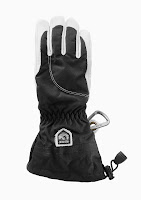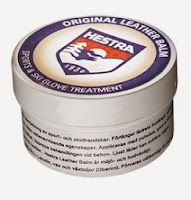-->
We know how difficult it is to choose a ski jacket for you and your
children. We have done our research and put in what we already know to give you
the best possible idea of what to search for when looking for a perfect ski
jacket - don’t just assume that tons of padding is the way to go!
The more
expensive a ski jacket is, the less the thickness of a ski jacket should
actually matter. Usually the more expensive ski jackets tend to be made to feel
and appear a thinner material, but this is made up for by the amount of time
that has been spent on the technology and the design of the ski jacket. The
features of adults and children’s ski jackets really do depend upon the brand.
Taped seams
are 100% essential - think when you're stitching - every stitch you make
creates a tiny hole in the material? Well, you may not realise it, but that is
what allows water to flow in! A little bit of an exaggeration, but this is one
of the most important elements when it comes to waterproofing in ski jackets.
It involves taping every single seam on the jacket
(regardless of where it is situated), to make sure that there is optimal
waterproofing! It also adds valuable strength and makes your ski jacket last a
lot longer.
In a ski
jacket, snow gaiters are extremely useful when it comes to preventing snow from
getting up the bottom of the ski jacket or up the sleeves, should you fall
over. These usually come with zips, poppers or
Velcro to make it easier to loosen to get the snow out.
Air
ventilation and breathability are absolutely essential when looking for a good
ski jacket for you or your children. You need to look out for zippers in the
sleeves and underarms which prevent sweating by wicking moisture away from the
skin, they are great for Spring skiing or if you really work hard on the
slopes.
Look for insulation!
The best ski jackets have three layers especially designed for cosiness and
warmth - not ones that are just layers and layers of padding, but ones that are
layers and layers of specially designed fabrics and materials. A bit later on I
will tell you all about the three different layers in a ski jackets and their
uses.
Weatherproofing
is a necessity when it comes to ski jackets. You need to have waterproofing and
windproofing features otherwise the ski jacket will not last very long at all!
Further on in this blog I will also give you an idea on what the best unit of
waterproofing to look out for is and why.
One of the
most important factors of ski jackets is the use of technology within them.
When it comes to waterproofing, you must always check the label! Manufacturers
typically describe the waterproof breathability of fabrics using two different
units:
· Millimetres (mm) – measure how
waterproof a fabric is. The higher the number, the higher the waterproofing.
· Grams (g)/square metre (m2) –
measure of how breathable the fabric is, expressed in terms of grams of water
vapour that can pass through a square metre of the fabric from the inside to
the outside.
Waterproof Rating (mm)
|
Resistance Provided
|
What it can withstand
|
0-5000
|
No resistance to some resistance to moisture
|
Light rain, dry snow, no pressure
|
6000-10,000
|
Rainproof and waterproof
under light pressure
|
Light rain, average snow,
light pressure
|
11,000-15,000
|
Rainproof and waterproof except under high
pressure
|
Moderate rain, average snow, light pressure
|
16,000-20,000
|
Rainproof and waterproof
under high pressure
|
Heavy rain, wet snow,
some pressure
|
20,000+
|
Rainproof and waterproof under very high pressure
|
Heavy rain, wet snow, high pressure
|
It’s also really important for
you to stay warm on the slopes.. That’s why you need to consider the different
elements and layers included in clothing insulation – its not just padding!
For optimal insulation in a ski
jacket, there are three different layers which all have their own importance:
- The first layer
near the body is for hygiene. The role of the first layer, such as
polyester, is to get rid of sweat so it does not remain in contact with
the skin;
- An outer close-knit
or closely woven layer of polyester or merino wool, as a wind breaker,
usually thin — if there is a risk of bad weather this should be
impermeable, the ideal being a textile that stops water droplets but
allows water vapour to pass so as to remove evaporated sweat (a textile
like this is said to "breathe");
- And between the
two, a thick layer of fleece traps the air and prevents contact between
the skin and the wind-breaking layer.
The RECCO® Rescue System is a technology which has been used by ski
resorts and mountain rescue teams for a while now, all just to keep everyone
safe on the mountain if you ski off-piste.
The RECCO® Rescue System has two uses - RECCO® detectors and
reflectors.
The RECCO® detectors are used by ski resorts and mountain
rescue teams which send out a search signal after a bad accident on the
mountain or an avalanche. But to have a built-in RECCO® reflector, you
need to do your research! They can only come in specific ski clothing, such as
Trespass ski jackets. The reflectors then bounce back a directional signal
which then directs the rescuer straight to the reflector and the person/people
in harm. This one thing is what can make the best possible ski jackets
around.
May Johnson, November 2013







.jpg)





